Instructional methods consist of principles and methods used by teachers to enhance and relate training to learners. Learn about these strategies and use them in relation with characteristics of your learners and your training needs.
When going through a training a course, you have a series of methods at your disposal that can help you transfer knowledge and skills at the right level.
An instructional method is defined by the process that you use to instruct people on a particular topic. Each instructional method has its own use case with certain advantages and disadvantages.
In this guide, you will be introduced to a comprehensive list of such instructional methods that can help you choose the right method for your specific needs.
Many trainers often use the same instructional methods over and over again mainly due to habit. This list will introduce you to other instructional methods that can improve your training and learning for your delegates.
Terminology
The term Instructional Methods is sometimes referred to differently by researchers though they all mean the same thing. Other terms include Teaching Methods, Teaching Strategies, Instructional Strategies or Training Methods.
Styles
In general, the use of instructional methods also depends on your overall aim and how you want people to learn. Hence, each instructional method is suitable for a particular learning style. There is also a specific teaching style associated with each instructional method.
Let’s see what each style represents.
Learning Styles
Learning can be categorised into the following main styles:
Style |
Description |
|
Knowledge-Based Learning |
The main focus of Knowledge-Based Learning is to transfer knowledge to the audience. As a result, the session is usually fact-based and information-rich. The most representative example for this style is giving a lecture.
|
|
Skill-Based Learning |
In contrast, the main focus of Skill-Based Learning is the transfer of specific skills. As a result, it is not enough just to explain the topics. The person who wants to learn the new skills must give them a try to gain hands-on experience. This leads to participatory training. |
Teaching Styles
Teaching can be categorised into the following styles:
Style |
Description |
|
Formal |
In a formal setup you have total authority over the session. It is common for you to do most of the talking in formal sessions. Your say is final and people see you as the expert in the domain, explaining everything to them. |
|
Facilitator |
You can train people as a facilitator. Your role is to facilitate the training session. There is a considerable interaction between participants and between them and you. You don’t necessarily do most of the talking; instead the focus is to help participants explore a particular domain on their own. |
|
Demonstrator |
You can demonstrate a particular function. This is usually based on a carefully planned setup that helps to educate the observer in understanding how something works. |
|
Delegator |
As a delegator, your role is to assign people a specific task. You will brief them on what they need to do and respond to their enquiries in relation with the task at hand. |
|
Mentor |
As a mentor, your role is to be a wise and trusted teacher, master and supporter. Your main aim is to set the environment in which the mentoree learns under your guidance. |
Instructional Methods
The following instructional methods can be used on their own or in combination with each other to address a particular training need. Notice that teaching styles and learning styles associated with each type are not strictly set and only indicate the generic style used most often by the trainers.
Lecture
Teaching Style |
Learning Style |
|
Formal |
Knowledge-Based Learning |
Instructional Method
The main use of the lecture method is to build up on what learners already know about a topic. Therefore, a lecturer must constantly relate the new information to learners’ current knowledge by use of examples and illustrations.
Giving a lecture can be particularly demanding as you need to prepare it, identify what sequence of topics to go through, use appropriate educational aids and then deliver it in an expressive way.
Since most of the talking is done by you, it becomes your responsibility to educate people at the right level and to keep them engaged. The pace of learning is also set by you so you need to make sure you get it right.
When to Use
- Use lectures when you want to cover many topics and teach a lot of people. You can think of it as the cheapest way to educate a large group of people about a particular subject.
- Lectures can help you quickly cover new topics and then lead the audience to study the subject further post lecture.
- Lectures are particularly useful for audiences that are totally new to a topic.
- Various supportive materials can be used to enhance the learning such as slides, illustrations, videos, posters, etc. In fact, the lecture method can be combined with the Multimedia Method to get better results.
When Not to Use
- One of the greatest weaknesses of the lecture format is the inability to quickly realise if your audience is following you or if the content is at the right level.
- Another issue is that since this is a one-way training method without much interaction, it is more likely that learners will forget the content if they don’t study it further post lecture.
- A lecture can become boring very quickly if learners cannot relate it to their own world.
- Lectures are not particularly useful for higher order thinking since they put the students in a passive state.
Lecture Combined with Discussion
Teaching Style |
Learning Style |
|
Formal |
Knowledge-Based Learning |
Instructional Method
This is the lecture method used with short discussions and a brief question and answer period (Q&A).
When to Use
- To encourage and increase engagement, you can use this method which at least allows some interaction after the lecture or at intervals.
- This method is also useful as it encourages questions so learners can clarify any misunderstandings.
- You can combine periods of Q&A and lecture to break up the content and increase interest.
When Not to Use
- Usually, there is not much time available to allow long discussions often due to the large group of attendees.
- Due to the large size of the group, there is a danger that as soon as you start focusing on someone’s concerns, other people lose interest.
- Discussions can shift the focus away from the main topic which can lead to confusion and topic hijack. This is more likely to happen with a large group of attendees. You would also need more time to get back to the main topic if you have been side tracked.
Demonstrations
Teaching Style |
Learning Style |
|
Demonstrator |
Knowledge-Based LearningSkill-Based Learning |
Instructional Method
You show how a process or procedure works by demonstrating it to learners. In this case, learning occurs through observation.
Depending on available resources and time, you could involve the learners in the learning process for some hands-on experience.
Demonstration can also be combined with the Multimedia Method by showing videos, simulations or virtual worlds.
When to Use
- When you need to show quickly how something works, demonstration can be quite effective.
- When there are health and safety issues, you will need to demonstrate first and highlight certain issues before allowing anyone to get directly involved.
- Demonstrations also help improve observation skills.
When Not to Use
- Sometimes learning is more effective when learners try the new skills on their own and understand what is involved. In this case, it is better not to start with a demonstration and instead use participatory methods such as Cooperative Learning so learners can be forced to think on their own. You want them to make mistakes and then quickly learn from those mistakes rather than just passively observing.
Presentation
Teaching Style |
Learning Style |
|
Formal |
Knowledge-Based Learning |
Instructional Method
The presentation method includes academic conference presentations, sales presentations and speeches.
These are collectively known as awareness-raising sessions. The objective is to quickly and efficiently make people aware of a specific topic. You are not aiming to teach people in depth and you usually don’t have much time to explore any topic in depth.
Most sessions are about 20 minutes or less so the aim is to make people excited about a topic and then help them to explore it more in their own time.
When to Use
- Use when you want to make people aware of a new topic, a new trend, a new product or a new idea.
- Use when you want to get people excited about your agenda.
When Not to Use
- Do not use this method when here-and-now learning is required.
- Do not expect people to be able to recall the details of your presentation long after the event. Expect only short term results.
Roleplay
Teaching Style |
Learning Style |
|
DemonstratorFacilitator |
Skill-Based Learning |
Instructional Method
This is a particularly common method used in training. While going through a roleplay, learners must think on the spot, act out a situation and relate it to their previous experience or the lessons just taught. This can significantly increase learning as the experience is strongly memorable and the learner is actively engaged.
You may also combine roleplay with the Demonstration Method by asking a person to roleplay with you (or an actor) while you demonstrate a particular concept.
When to Use
- Roleplay is particularly useful for raising awareness of a topic.
- You can design a roleplay where the aim is for everyone to participate in groups and experience the skill first hand.
- You can combine a roleplay with the demonstration technique. You can choose a number of volunteers (or ask those who are more suitable for the task) and get them to roleplay in front of other learners. Their roleplay becomes a demonstration to other learners.
- Use roleplays when you need to stimulate discussions and encourage learners to share their experiences. This allows you to use a rolelay as a catalyst for the discussion that follows.
- Roleplays are very useful when teaching soft skills. You can get groups to practice communication skills using a variety of carefully designed roleplays and exercises.
- Roleplay is a low cost and easy-to-use method that can be easily employed when needed.
- Roleplays allow you to focus on real problems directly.
- Roleplays can be motivating and energising. Once people carry out an act in a roleplay, they become more confident to do it in real-life situations.
When Not to Use
- It is well-known that some people do not like roleplays at all. This is usually because they don’t want to be put on the spot. They might be somewhat shy or may not like public presentations. One way to avoid this is to divide the class into smaller groups or pairs and get each group to roleplay for each other. This means participants are not observed by many people while at the same time allows you to teach using this instructional method.
- If the roleplay event becomes more of an entertainment than an educational tool, you risk losing time and focus.
- If a subject is sensitive for some, you need to make sure that either they can safely avoid participating in it or you can go through the topic some other way.
- The focus of the exercise might change to acting and overacting rather than observing and examining a skill.
Field Trips
Teaching Style |
Learning Style |
|
Demonstrator |
Knowledge-Based LearningSkill-Based Learning |
Instructional Method
A variation of the Demonstration Method is to take people out to a field trip for an in-situ demonstration.
Field trips are usually quite memorable and entertaining. As a result, if carefully planned, they can significantly improve learning and motivation.
When to Use
- Use field trips to significantly raise learners’ interest in a topic and motivate them to explore it further.
- Field trips give you an opportunity to engage all of your learners’ senses and therefore boost learning.
- For certain topics, such as showing how a factory works, a field trip might be the most effective form of training since no other method might immerse the learners in the topic as much as this.
When Not to Use
- Field trips can be costly and require significant forward planning. Make sure that the end result is worth the effort from the training point of view.
- If you expect disruptions to your plan when on a field trip, for example due to unavailability of resources, then it could be better not to go at all. Field trips take a considerable amount of time for learners, so from their point of view it must be worth their while.
Cooperative Learning
Teaching Style |
Learning Style |
|
Facilitator |
Skill-Based Learning |
Instructional Method
Cooperative learning takes place through group discussions and group exercises so by increasing interactions in your course you can significantly improve learning.
You will need to prepare the training exercises beforehand and make sure they are at a suitable level for your learners.
When to Use
- When you want to encourage mutual responsibility and inspire learners to help each other.
- When you want to create bonding and make people feel more comfortable with each other.
- If some learners are much better than others in a particular skill, cooperative learning allows you to tap into their knowledge and use it for the training course. You can group these individuals with learners who are new to a topic to increase training efficiency. This method would benefit everyone and also off loads some of the training tasks from you, giving you more time to observe and provide targeted feedback.
When Not to Use
- Some people are naturally shy and may not participate as much. If you use this method, you will need to make sure that everyone is engaged in exercises.
- A bad exercise can easily backfire as learners can be reluctant to participate in it.
Collaborative Learning
Teaching Style |
Learning Style |
|
Facilitator |
Skill-Based Learning |
Instructional Method
Collaborative learning is a term used that covers various group activities taking place in a training event. Examples are coursework after a lecture or group-based homework after a training course.
Group work helps learners think about the lessons and relate them to their current knowledge. The coursework can define a number of problems that the group has to collectively solve. In this case, Collaborative Method can be combined with Problem Solving Method.
To be effective, you will need to monitor learner’s progress or ask them to report their results to you. Without your feedback, the teaching is not as effective since group work is carried out unsupervised.
When to Use
- Use this method when the task is engaging and takes a considerable amount of time. Rather than getting learners to go through cooperative exercises (during the course), you can use collaborative learning allowing them to carry out the coursework in their own time.
- This method helps to create bonding between groups members.
- It helps learners to share ideas and contribute to a solution.
- This method encourages independent thinking as opposed to passive learning.
- It helps to build communication skills as group members need to learn how to present their ideas, how to reach a compromise and how to listen to others actively.
When Not to Use
- Do not use collaborative learning when direct feedback is needed. In certain topics, it might be better to minimise development of bad habits, so carrying out the exercises during the course could be more beneficial.
- Don’t use this method when there is a high chance that group members do not get along together or cannot meet up due to time or resource constraints. Having not done the coursework, people will come back to the next training session unprepared and with poor knowledge of the topic. This can significantly affect your schedule and you might be forced to revisit the topic.
Brainstorming
Teaching Style |
Learning Style |
|
Facilitator |
Skill-Based Learning |
Instructional Method
Brainstorming is a group effort in finding a list of ideas for a specific problem. Ideas are generated spontaneously, discussed and possibly scored to find the best course of action.
Your role mainly is to facilitate the process, set rules and supervise adherence to these rules.
An individual opinion or suggestion shouldn’t dominate the discussions during brainstorming. The idea is to collectively explore a problem and reach a consensus.
Various brainstorming techniques have been developed over the years with the intention to encourage everyone to contribute, even those who are shy or hesitant to share their opinions. The systems are designed to encourage equality of ideas so no individual’s ideas come to dominate because of position or character.
For training purposes it is likely that you select the brainstorming topic yourself and set the rules.
When to Use
- To encourage independent thinking or collect a large number of solutions to a given problem
- To encourage full participation.
- Brainstorming is particularly effective for making associations between various ideas which leads to more creativity.
- Brainstorming helps to create a bond between the participants and is a useful team building technique.
When Not to Use
- Brainstorming can be unfocused and participants can easily get side tracked.
- Long brainstorming sessions are often boring and discouraging. Limit the length of brainstorming sessions to about 10 minutes or use rapid brainstorming techniques such as the 6 thinking hats.
Problem Solving
Teaching Style |
Learning Style |
|
DelegatorMentor |
Skill-Based Learning |
Instructional Method
With this method, learners are given a problem to solve by researching, collecting data, and presenting an explanation or a solution.
Problem solving encourages strategic thinking and is particularly effective in developing cognitive skills.
This method is also known as Inquiry Learning or Project-Based Learning.
The essence of the method is that you give an assignment to individuals or to groups and expect an evaluation.
When to Use
- Use problem solving when learners already have some experience and knowledge about the topic under consideration. If you set people to solve a problem before they are ready for it, it can backfire and put them off.
- Problem solving must be followed with an evaluation so you can provide feedback and correct misunderstandings or show shortcuts.
When Not to Use
- Problem solving is time consuming. You need to have enough time to use this method during a training session. Problem solving used with Collaborative Learning as part of coursework allows leaners more time to spend on the problem in their own pace.
Case Study
Teaching Style |
Learning Style |
|
Facilitator |
Skill-Based Learning |
Instructional Method
In the Case Study method, learners work together to analyse a case. The case can be a real-life situation or one specifically designed to teach a number of skills. This method also allows people to learn from other people’s experiences by studying a real-life scenario.
For training purposes, to get the most from a case study, you need to follow it with a debriefing session, encouraging everyone to share their ideas and analysis. You can then highlight solutions or areas that have not been covered.
With a case study, you will need to carefully prepare the case study and know what areas need to be covered after each person or group presents their analysis.
A case study can be given as an exercise during the course (cooperative learning) or as a coursework/homework (collaborative learning).
You will need to prepare the case study but once made, it can be used easily with little demand on your time.
When to Use
- Use this method to encourage an analytical approach and help learners to practice their diagnostic skills.
- Use a case study to show how something works in real like or what doesn’t work.
When Not to Use
- The strength of this method largely lies on the quality of the case study. Sometimes, it can be difficult to find a suitable case study and it might be better to avoid going through a poor case as not to confuse or waste time. Consider the following when choosing a case:
- Avoid a case which is too general without focus on a specific issue.
- Hypothetical case studies may be too unrealistic or too narrow.
- Some case studies are too idealistic, making them realistically impractical.
Training Games
Teaching Style |
Learning Style |
|
Facilitator |
Skill-Based Learning |
Instructional Method
Games can be entertaining, educational and challenging. Carefully designed games can boost learning significantly by encouraging independent thinking while also making the experience more memorable.
It is important to follow games with a debriefing to avoid the game becoming only an energiser or an icebreaker.
Games are useful for team building event. They can be setup in cooperative or competitive mode.
When to Use
- Use games to energise learners and to make the training more memorable.
- Use games to address complex issues in simpler ways.
When Not to Use
- A bad game can have adverse effect on people’s perception of a training course.
- The focus of the game must be clear, otherwise it becomes confusing or difficult to debrief.
- If your aim is to entertain participants or encourage team building then icebreakers or energisers are more suitable.
- Competitive games can create feelings of inadequacy in those who are not as skilled as others.
Multimedia
Teaching Style |
Learning Style |
|
FacilitatorDemonstrator |
Skill-Based LearningKnowledge-Based Learning |
Instructional Method
You can use videos, online content or e-learning solutions to explore a particular domain.
The content can have an entertainment and educational value, keeping learners engaged.
Once you have identified and prepared the content, it can be a cost effective way to train people on a given subject.
You can also use this content in addition to the training course to further extend it.
Multimedia can be passive (like videos) leading to knowledge-based learning or active (such as interactive e-learning) leading to skill-based learning.
When to Use
- Use multimedia solutions to expose learners to a lot of information. They allow you to quickly go through a lot of content.
- Multimedia training solutions can be multisensory and therefore more memorable.
When Not to Use
- They can easily become distracting if not focused.
- Only use them when there is enough time for a review and discussion afterwards, otherwise it could only have an entertainment value.
Simulations
Teaching Style |
Learning Style |
|
DelegatorFacilitator |
Skill-Based Learning |
Instructional Method
A simulator places the person in an artificial setting that closely resembles the real-world environment. Historically, simulators were developed to train aircraft pilots. Over the years, the use of simulators has been extended to a variety of industries. Today simulators are often a form of computer-based learning although they are not restricted to this form alone.
The success of this method largely depends on the simulator itself. Since they are technical products, you are likely to obtain them from a supplier who specialises in producing them.
To use, there are three phases:
-
Pre-simulation
- Select the simulator.
- Identify rules, difficulty levels, skill sets and the general framework to train people on.
- Test the simulator to make sure it closely resembles the specific real-world situations suitable for your learners.
-
Simulation
- Provide a brief to learners on how to use the simulator’s interface.
-
Post-Simulation
- Allow time for learners to reflect on their own performance.
- Analyse their progress and draw parallel with real life situations.
- Summarise the entire simulation activity and identify next actions for each learner.
In the context of soft skills, simulations can also be combined with the Roleplay Method and the Demonstration Method. For example, you can hire actors and prepare them to act out the role of a certain character, such as a demanding colleague. The learners must learn how to handle this colleague and would need to respond to the actor based on the lessons taught. The advantage of this method is that you can brief the actor beforehand and carefully plan the event, effectively simulating a real-world scenario.
When to Use
- Use this method to teach at a high level. Simulations allow the study of very complex processes.
- This is a highly engaging method. Performance can be easily evaluated allowing a rapid teaching method. This means that you can easily target weaker areas of learner’s performance.
- The pace is controlled by the learner, so this is suitable for a group of people who are at different levels.
- Since all senses are engaged the learning is deep and long lasting.
When Not to Use
- Simulators can be expensive to obtain and to run.
- Learners must accept the usability of the simulators and that they closely resemble real-life scenarios.
- The simulator’s interface must be user friendly and suitable for the target learners. For example, placing learners who are unfamiliar with game-like computer user interfaces can be a challenge.
- You must be skilled and experienced in using the simulator to get the most from it.
Instruments
Teaching Style |
Learning Style |
|
Delegator |
Knowledge-Based Learning |
Instructional Method
Instruments are generally one or more printed sheets with a series of questions. The questions can be multiple-choice or require short answers. Instructions are provided with these questionnaires explaining how to use them.
The purpose of these instruments is to let learners find out more about themselves by answering a number of questions.
At the end, further instructions are provided on how to assign scores and evaluate the responses. The instructions will then indicate what each score represents. Once the data is generated, it is up to the learner to use them and draw conclusions from them.
Examples of such instruments are personality trait indicators such as MBTI Tests or team role indicators such as the Belbin Team Inventory.
When to Use
- Use instruments to help learners discover their own traits and behaviours. Since it is an indirect method with no external pressure, it can be quite powerful and convincing with long term results.
- Use this method to increase awareness about a certain area.
- Use when you want to encourage self-reflection and self-analysis.
When Not to Use
- Learners must be honest with themselves to get meaningful results. Don’t use instruments if you suspect that learners will dismiss the questions or are offended by them. They will refuse to answer the questions or dismiss them, making the whole exercise a waste of time.
- Instruments must be carefully designed and statistically tested to provide valid conclusions. For best results, always obtain tried and tested instruments from well-established and specialised suppliers.
Apprenticeship
Teaching Style |
Learning Style |
|
Mentor |
Skill-Based Learning |
Instructional Method
Apprenticeship is a traditional instructional method used extensively in history to train artists, musicians, sculptors and engineers. It is basically an on-the-job training under the leadership of a mentor.
Apprenticeship immerses the learner in a specific field. Since it is usually full-time and with constant access to a master, it is perhaps one of the most effective instructional methods ever invented.
A limited form of apprenticeship can take place in a workplace environment by assigning a mentor to an employee. On-the-job training can then be used to train people on the use of machinery or in-house procedures.
When to Use
- Use when the number of learners is small and a direct one-to-one training is possible.
- Use apprenticeship or on-the-job training when a full hands-on approach is the most effective way to train people.
- Use when the skill under consideration requires a long time to master, taking several years of constant practice. For this you would need to follow traditional apprenticeship formats such as employing an apprentice to join your company and work on various skills under the supervision of a mentor while contributing towards the output of the company.
When Not to Use
- It is important that the mentor is available to provide feedback and guidance. Apprenticeship without the availability of a mentor falls back to self-learning by trial and error which is not an instructional method.
- It requires significant resources or availability of a master/mentor who can take on an apprentice. In return, the leaner can contribute towards the master’s work and even get paid a basic wage.

About the Author
Dr Ethan Honary is the founder of Skills Converged Ltd. A training consultant, researcher, author and designer with an aim to help trainers worldwide to improve training delivery and course design.
Table of Contents
Lecture Combined with Discussion
Course Design Strategy
Available as paperback and ebook
Online Train the Trainer Course:
Core Skills
Learn How to Become the Best Trainer in Your Field
Train The Trainer Book
Available as paperback and ebook
Explore Topics
Longform Train the Trainer Guides
All In-Depth Articles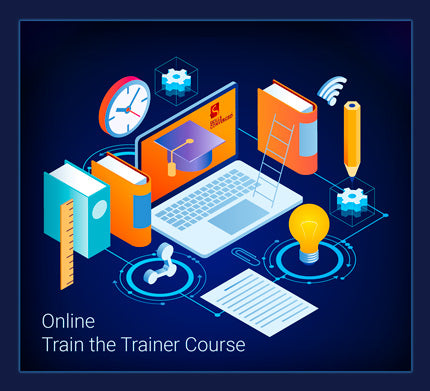
CPD Accredited
Online Train the Trainer Course: Core Skills
Learn How to Become the Best Trainer in Your Field
Full Course Details
How to Reference This Article
Honary, E. (2019) "Instructional Methods", Skills Converged. Retrieved from: https://www.skillsconverged.com/blogs/train-the-trainer/instructional-methods





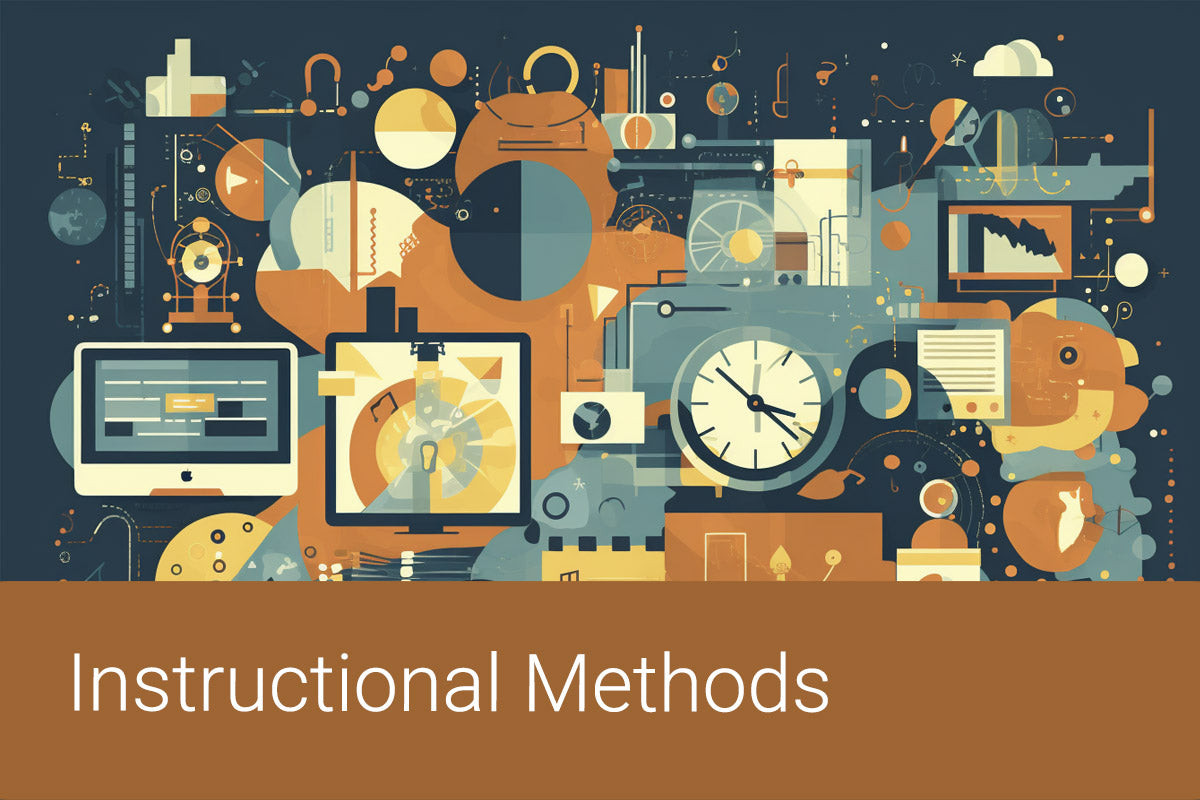



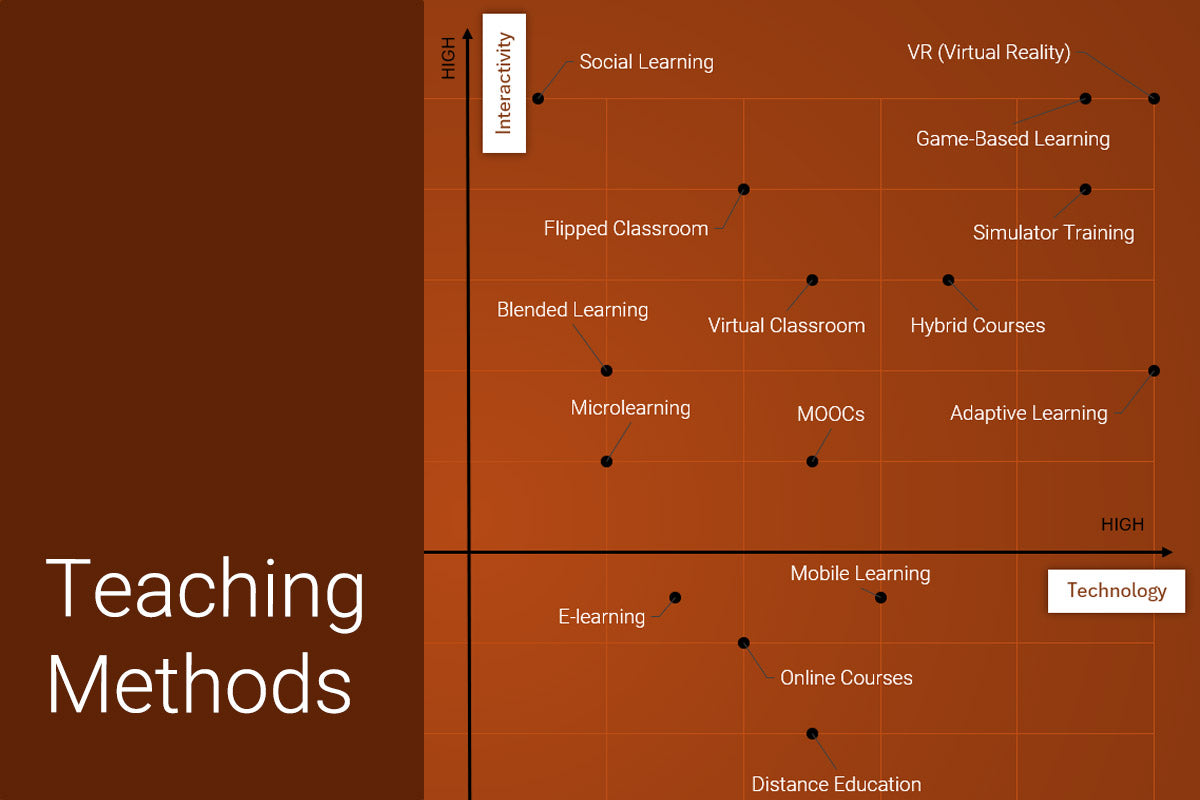
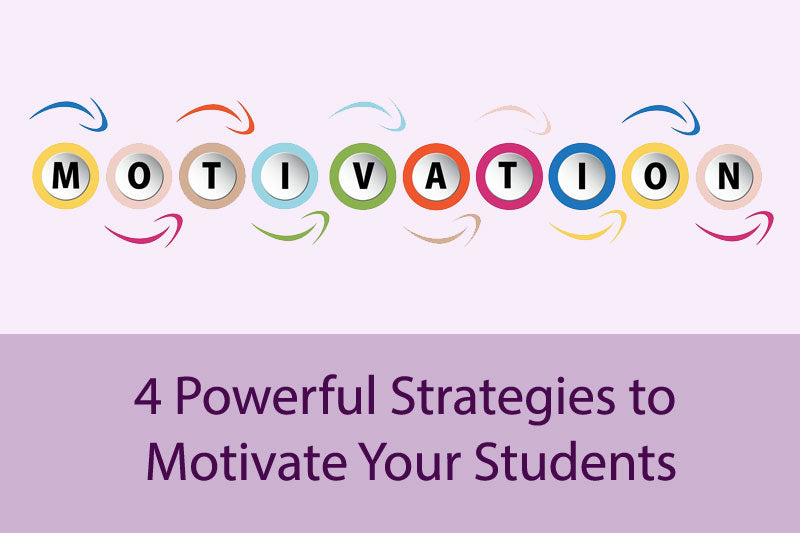


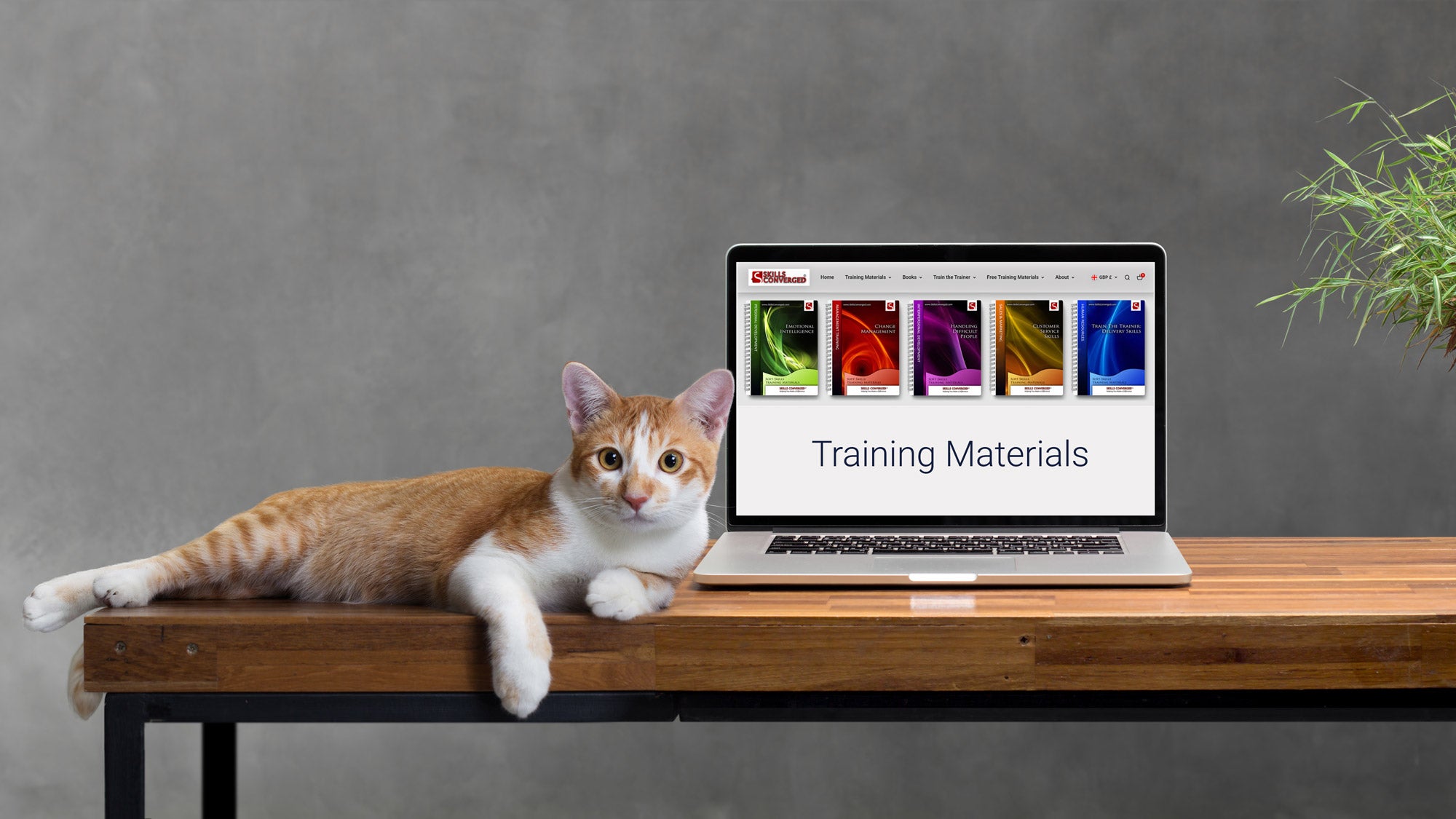
Leave a comment
All comments are moderated before being published.
This site is protected by hCaptcha and the hCaptcha Privacy Policy and Terms of Service apply.